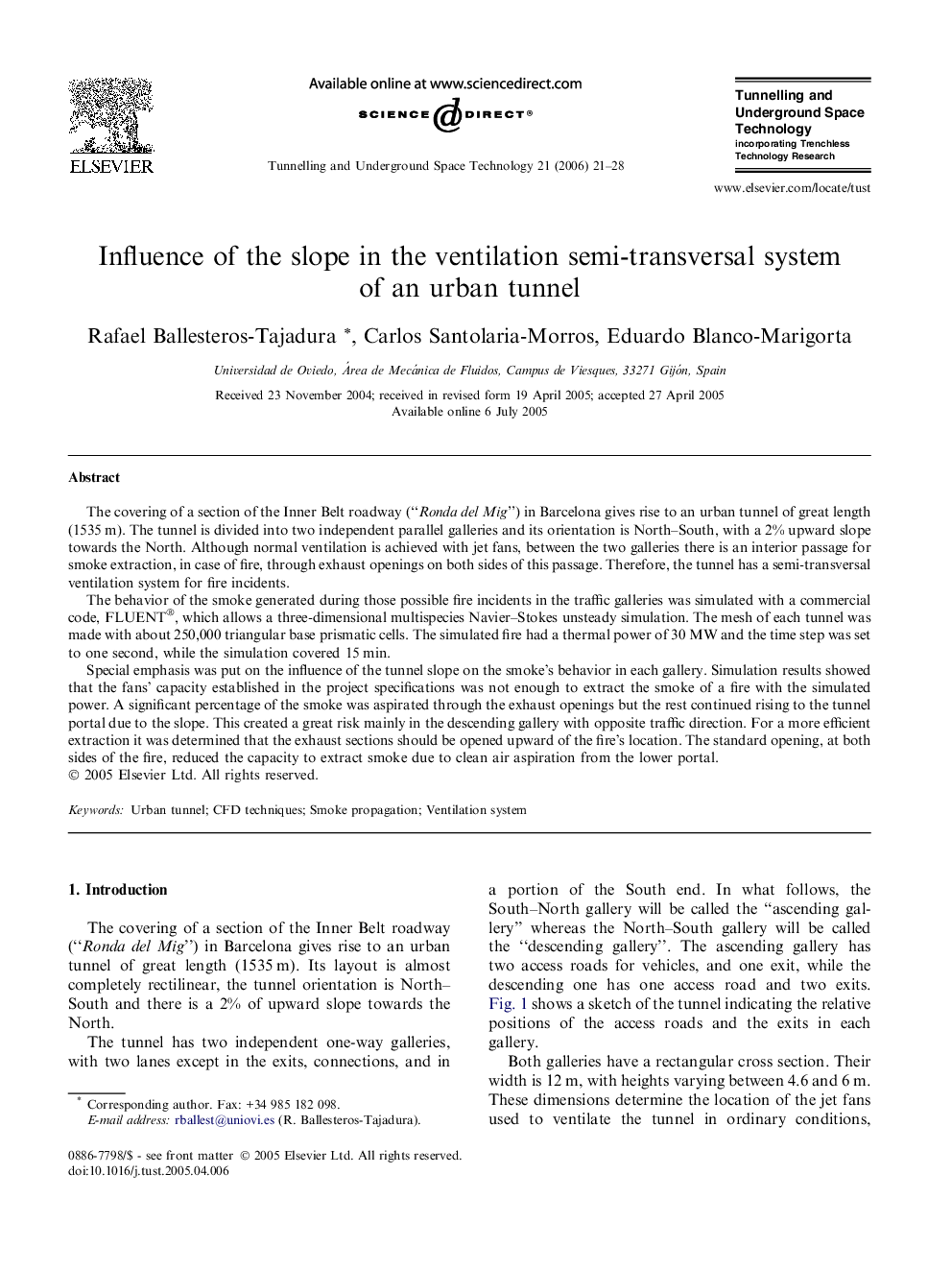| Article ID | Journal | Published Year | Pages | File Type |
|---|---|---|---|---|
| 312752 | Tunnelling and Underground Space Technology | 2006 | 8 Pages |
The covering of a section of the Inner Belt roadway (“Ronda del Mig”) in Barcelona gives rise to an urban tunnel of great length (1535 m). The tunnel is divided into two independent parallel galleries and its orientation is North–South, with a 2% upward slope towards the North. Although normal ventilation is achieved with jet fans, between the two galleries there is an interior passage for smoke extraction, in case of fire, through exhaust openings on both sides of this passage. Therefore, the tunnel has a semi-transversal ventilation system for fire incidents.The behavior of the smoke generated during those possible fire incidents in the traffic galleries was simulated with a commercial code, FLUENT®, which allows a three-dimensional multispecies Navier–Stokes unsteady simulation. The mesh of each tunnel was made with about 250,000 triangular base prismatic cells. The simulated fire had a thermal power of 30 MW and the time step was set to one second, while the simulation covered 15 min.Special emphasis was put on the influence of the tunnel slope on the smoke’s behavior in each gallery. Simulation results showed that the fans’ capacity established in the project specifications was not enough to extract the smoke of a fire with the simulated power. A significant percentage of the smoke was aspirated through the exhaust openings but the rest continued rising to the tunnel portal due to the slope. This created a great risk mainly in the descending gallery with opposite traffic direction. For a more efficient extraction it was determined that the exhaust sections should be opened upward of the fire’s location. The standard opening, at both sides of the fire, reduced the capacity to extract smoke due to clean air aspiration from the lower portal.
